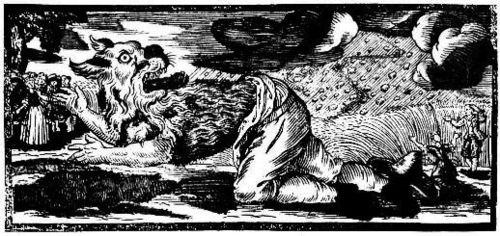Werewolfnoun
(mythology) A person who is transformed or can transform into a wolf or a wolflike human, often said to transform during a full moon.
Werewolfnoun
A person transformed into a wolf in form and appetite, either temporarily or permanently, whether by supernatural influences, by witchcraft, or voluntarily; a lycanthrope. Belief in werewolves, formerly general, is not now extinct.
Werewolfnoun
a monster able to change appearance from human to wolf
Werewolf
In folklore, a werewolf (Old English: werwulf, ), or occasionally lycanthrope (Greek: λυκάνθρωπος lukánthrōpos, ), is a human with the ability to shapeshift into a wolf (or, especially in modern film, a therianthropic hybrid wolflike creature), either purposely or after being placed under a curse or affliction (often a bite or scratch from another werewolf) with the transformations occurring on the night of a full moon. Early sources for belief in this ability or affliction, called lycanthropy , are Petronius (27–66) and Gervase of Tilbury (1150–1228).
Wendigonoun
(mythological creature) A malevolent and violent cannibal spirit found in Anishinaabe, Ojibwe, and Cree mythology, which is said to inhabit the body of a living person and possess him or her to commit murder.
Wendigo
Wendigo () is a mythological creature or evil spirit which originates from the folklore of First Nations based in and around the East Coast forests of Canada, the Great Plains region of the United States, and the Great Lakes region of the United States and Canada, grouped in modern ethnology as speakers of Algonquian-family languages. The wendigo is often said to be a malevolent spirit, sometimes depicted as a creature with human-like characteristics, which possesses human beings.







